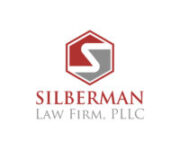
For both a landlord and a tenant, negotiating, drafting, and finalizing a lease can be an arduous process. Because both parties work to ensure that their own interests are addressed in the document, negotiating a final draft of a lease can involve a significant amount of wrangling, an expensive process which can sometimes lead the landlord or the buyer to walk away from the deal. Such contentious exchanges do not have to be the norm, however. A less adversarial approach can yield better, less costly results for both landlord and tenant.
In a previous post, we discussed in greater detail contractual clauses frequently included in commercial leases. We also note there that “there is no standard commercial lease form in Texas, and leases are often custom documents drafted by the landlord’s attorney to be heavily favored for the landlord. Prospective tenants usually retain an attorney to revise and negotiate the lease with the goal of executing a more neutral agreement.” While most often the leases are pro-landlord, several options exist to ensure that the tenant is not at a disadvantage throughout the negotiating and drafting process.
Before Writing the Lease
Even before trying to draft a lease, a landlord and tenant can proactively communicate their needs. A tenant who clearly communicates priorities and expectations early on has a much greater advantage than one who waits to make requests or requirements later in the process by amending the drafted lease. Expressing their needs at the beginning of the negotiation means that both parties are clear about expectations, more likely leading to an agreement acceptable to both parties. Early in the process, for example, a potential tenant would do well to request exclusive use rights; clarify assignment or subletting options; define hours of operation; set limits or exclusions on operating costs; address parking issues; identify specific needs of the space based on the type of business, just to name a few considerations. Coming to an agreement on basic terms such as these before signing a letter of intent, and certainly before trying to draft a lease, allows the parties to assess the feasibility of moving ahead with the transaction. If at that point both parties seem amenable, a tenant may choose to present a letter of intent to the landlord.
Drafting the Lease
After receiving an offer, the landlord usually provides the tenant with a lease, which the tenant typically reviews with an attorney. While a tenant might then edit the lease itself, a more efficient way to fully communicate priorities is to present a separate list of issues within the lease. Doing so will clarify for the landlord the items of greatest concern for the tenant without either party being distracted by the legal language of the lease itself. This list allows transparency and communication for both parties in a time-efficient way.
Protracted (and costly) negotiations frequently result from drafts that are marked-up with too many suggestions for change. While the philosophy may be that requesting too much creates more leverage, the reality is that too many requests bog down the negotiation as parties wade through the requests, a process that is not only time-consuming, but costly. These requests also cloud the priorities of the suggestions: of the ninety changes requested, the other party cannot tell which are the top ten. A savvy landlord may look at an overly-revised draft, recognize the cost involved in negotiating, and walk away from the deal, especially if other tenants are interested.
Although contrary to some notions about negotiation, validating the other party’s needs is a good negotiating technique. A practical, reasonable, accommodating approach usually leads to success for both parties. Another way to reduce potential conflict is to review the lease from the perspective of the other party. While typically forms have favored the landlord, recently, market-standard leases reflect more of the tenant’s preferences and concerns, streamlining the negotiation process. Even with these more collaborative approaches, however, expect several revisions of a lease before both parties can agree on the final version.
Revising the Lease
Another time-saving device is to use as much of the existing language from the standard form as possible. Revising is almost always faster than rewriting the lease. Also, rewriting one section may have unforeseen consequences on other parts of the agreement. Deleting sections of the contract is another approach that sometimes creates needless disagreements. Instead of deletion, a better approach is to insert new language which addresses the specific concerns caused by a portion of the lease. If the form language is clear and concise, don’t change it. Wordy, convoluted sentences also cause confusion and disagreement as opposed to clear and concise statements.
While it may seem like an efficient solution, simply exchanging the word “tenant” for “landlord” often creates more problems than it solves. The same is true of sections lifted from a pro-tenant lease and added to a pro-landlord lease. A better approach is to insert sections which address a tenant’s concerns while also acknowledging the landlord’s worries. Anticipating the other party’s concerns and offering revisions based on that perspective is a fair-minded way to foster a spirit of cooperation between parties.
Being realistic about the scope of a contract is also important. If the property and cost are not large, the negotiation process should reflect that fact. Too many disputes over a relatively small contract may mean that the negotiations quickly outweigh the cost benefits, providing little incentive for continuing the transaction.
Fostering a collaborative approach means picking battles wisely; If a concern is more theoretical than practical, don’t waste time or effort on it. If an offer is good, accept it and move on. In general, make it easy for the other party to say yes, and be willing to say yes as well.
The Finalized Lease
Consider the needs of the other party also when finalizing and sharing a lease. The other party may not have standard office equipment, for example. Not everyone has a printer that will accommodate legal sized paper, so use 8.5x11 inch paper. Also, while Microsoft Word does include a “tracked changes” function, many companies have email filters which delete the tracked changes from a document sent or received via email. Provide a red-line copy of the lease, one that tracks the revisions which occurred throughout the negotiations, and in addition include a clean copy. Ideally, the clean copy is not a PDF file but something that is more user friendly.
Since most leases are multi-year commitments, they can make or break a company. Working with a lawyer trained in real estate law is an essential part of the negotiating and drafting process, ensuring the best possible outcome for everyone involved.
All information provided on Silblawfirm.com (hereinafter "website") is provided for informational purposes only and is not intended to be used for legal advice. Users of this website should not take any actions or refrain from taking any actions based upon content or information on this website. Users of this site should contact a licensed Texas attorney for a full and complete review of their legal issues.
